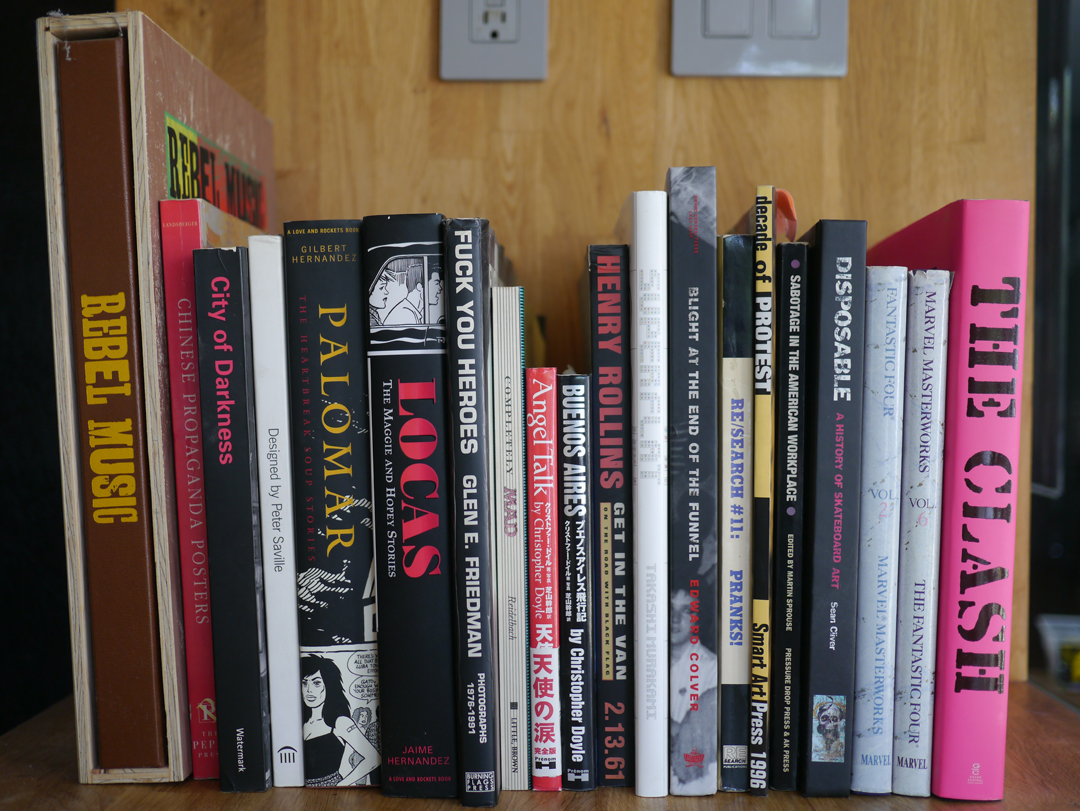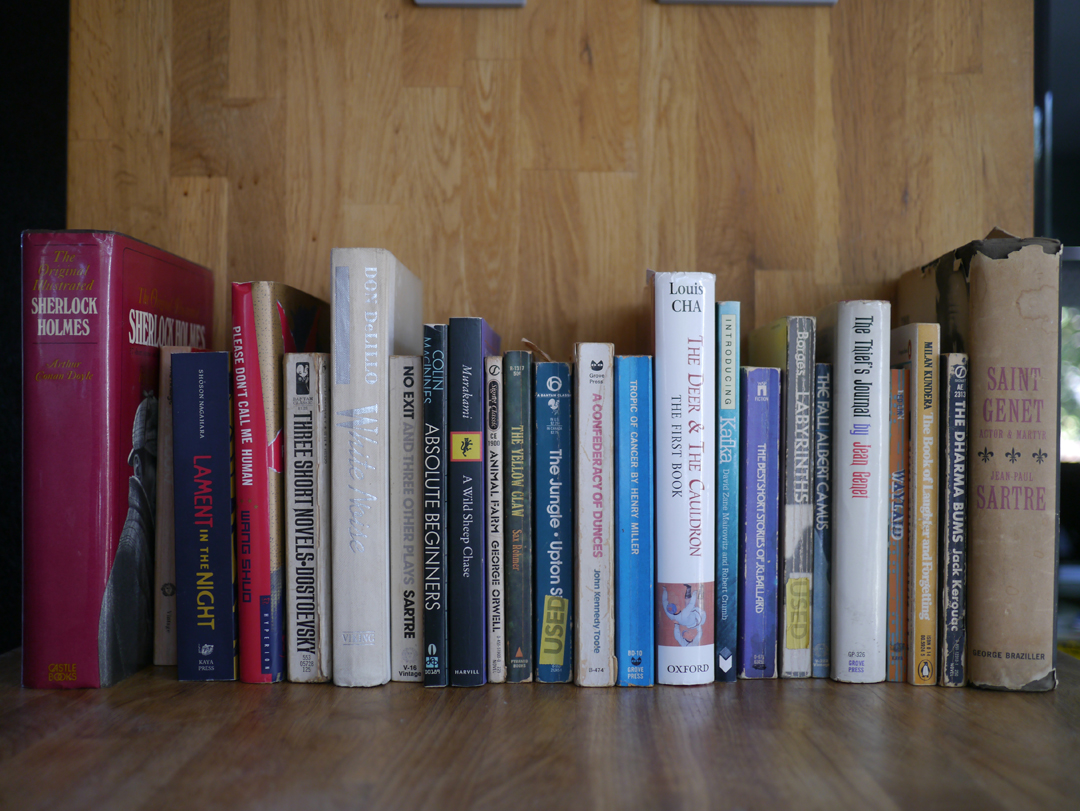Aug 04, 2015 Starting a library

You might have heard that Imprint has recently moved to a new office: the renovated Psychic Temple in Downtown Long Beach. It’s a lovingly, gorgeously, and intelligently restored commercial building–the second oldest in the neighborhood–and the library is an inspired collaboration between architect/designer Brandon Shigeta and artist James Jean.
Imprint founder Julia Huang asked a handful of colleagues to make lists of books that will fill the shelves. Sounds crazy to cover up the artwork but, ideally, this library will provide inspiration to the creative office in the traditional way as well. Here’s my first round of suggestions–not to be confused with the photos of personal favorites taken off my own shelves. What books would you suggest for an office that creates advertising for the Asian market and also grooms creative culture?
Ai Wei Wei: According To What (Prestel USA, 2012) – This isn’t the newest book about the outspoken Chinese contemporary artist, but this extensive retrospective catalog might be the most comprehensive. Art movements come and go and so do governments. But Ai’s spirit of rebellion and creativity is timeless.
Beautiful Losers: Contemporary Art and Street Culture (D.A.P./Iconoclast, 2005) – Curator Aaron Rose did the nearly impossible by framing a group of fiercely independent artists who are vastly different in style into a movement. His selection is by no means complete or balanced, but the chosen artists are as excellent as they were out of their minds making cool art and art cool.
Kurosawa: Master of Cinema (Rizzoli, 2010) – Peter Cowie’s sizable tome celebrates the master filmmaker with ample insight and gorgeous images. That Kurosawa could tackle both Shakespeare and Dostoevsky is telling. Is there another filmmaker who is so universally appreciated, loved, and impactful?
My Rules (Burning Flags Press/Rizzoli, 2014) – There are so many amazing photographers who have captured youth movements and underground scenes. But Glen E. Friedman has not only documented but pushed the advent of skateboarding, hardcore punk, and rap. The New York photographer and provocateur has self-published many books, but this one is the most comprehensive. Subjects and contributing writers include Stacy Peralta, Ian MacKaye, and Chuck D.
Plastic Culture: How Japanese Toys Conquered the World (Kodansha International, 2006) – There is more scholarly treatment of vintage die-casts and vinyls as well as glossier toy porn out there, but Woodrow Phoenix’s book places everything in context. The playthings tell a story of a country coming out of the wreckage of war, a perfect storm of eastern and western cultures getting mixed up, and the explosion of Asian popular culture.
Scrapbook: Uncollected Work, 1990-2004 (Drawn & Quarterly, 2004) – Adrian Tomine emerged from the staple-and-folded, DIY mini comics scene to become one of the most respected graphic novelists in the field. This collection of strips and art shows the evolution of an impeccable artist, master storyteller, and reluctant comics icon who happens to be Asian American.
Superflat (MADRA Publishing, 2001) – Takashi Murakami has newer, more complete collections now but this book captures the moment that he brought contemporary Japanese art to the international spotlight. His manga- and anime-informed art built on a foundation on woodblock prints did a lot to make Asian culture as well as art in general cool for a young generation of Americans.
Eiji Tsuburaya: Master of Monsters (Chronicle Books, 2014) – Ultraman was the first Asian superhero, bridging the gap between Godzilla and Power Rangers, and American otaku August Ragone gives the creator his due in this fully authorized, researched, and well-crafted book.
Underground Classics: The Transformation of Comics into Comix (Abrams, 2009) – Graphic novels are mainstream these days and this tome by publishing pioneer Denis Kitchen and scholar James Danky shows the roots of non-superhero comics. The lineage from buying comics at head shops (Zap!) and comic book stores (Blab!) to modern classics like Barefoot Gen, Maus, and Persepolis is made clear through samples, sketches, essays, and more.
Put books on your shelves! And please follow Imprint on Twitter, Instagram, and Facebook.



